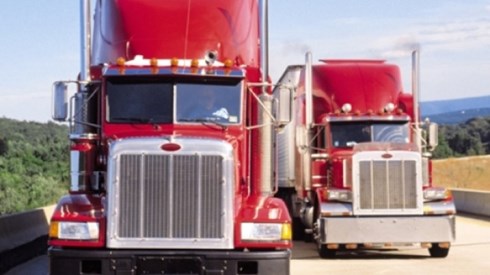Captive Insurance Opportunities in the Transportation Industry

Legare Gresham | September 25, 2017

Recent years have been difficult for the commercial automobile insurance industry. Both frequency and severity have been escalating, while rate increases have not been sufficient to offset the climbing loss costs. Captive insurance and the alternative market can provide a flexible option for companies and groups as they respond to the industry’s increasing market volatility.
Data compiled by the Bureau of Transportation Statistics, the National Highway Traffic Safety Administration, and the Federal Motor Carrier Safety Administration show similar trends. The total miles driven for commercial and personal use combined have been growing since 2011. At the same time, highway accidents involving large trucks or buses have also been increasing. In particular, the frequency of bodily injury crashes involving large trucks or buses has indicated an upward trend since 2009, with the number of fatal crashes showing a similar pattern.
While it is fairly simple to identify that frequency and severity have been increasing, the drivers of these trends are not always clear. However, a number of contributing factors have been identified. For frequency, the most obvious reason is the overall increase in miles driven, leading to higher traffic density. According to most studies, there is a strong correlation between overall automobile claims frequency and the total number of miles driven in the past 10 years. Distracted driving may also contribute, especially with the increased prevalence of smartphones.
On the severity side, there have been increases in both the property/physical damage costs as well as the bodily injury costs. The economic recovery has generated a surge in new car and truck sales, and these newer cars include advanced technology and safety features that can drive up both the vehicle’s purchase price and its subsequent repair costs. Medical inflation as well as the increase in the number of fatalities have been cited as contributors to higher average bodily injury costs. For incidents involving fatalities, there tends to be extensive damage to vehicles involved, and a bodily injury claim frequently settles at policy limits. Distracted driving may also play a role in the severity of an accident.
While the combined ratio has dropped below 100 percent for the total property and casualty market as well as the commercial lines market in recent years, the combined ratio for the commercial automobile market has remained greater than 100 percent. There have been several insolvencies, and some large carriers have pulled out of market segments, particularly affecting long-haul trucking and passenger transport.
For companies interested in taking an active role in the risk management of their operation, the alternative market offers a number of opportunities to better manage their programs. These include the following.
- Single-parent captive—This is ideal for a large company with relatively stable and predictable experience and historically low loss ratios. The company has the ability to actively manage the program and take advantage of market dynamics. As the market hardens and softens, the captive can take on more or less risk and transfer the rest to the commercial market.
- Self-insurance/high-deductible plans—This can be utilized as a stand-alone option or as part of a captive insurance program. As a company feels comfortable taking on more risk, especially if there is a good risk management program in place, the company can reduce the premiums paid to the commercial market. This can reduce the volatility that might be experienced in the commercial market as the market hardens and softens. However, if there is a year with larger than expected claim activity, the company would have to find the funds necessary to pay any claims that are not covered by the commercial insurance in place.
- Fronted agency captive—An agent may control a large book of well underwritten owner-operators who have produced historically low loss ratios. The agent has the ability to aggregate the portfolio of risks to get consideration from a commercial carrier. Both the owner-operators and the agent have the opportunity to earn dividends if the program continues to have good loss experience.
- Fronted group captive—This can work well for groups with some commonality who are not commonly owned but also not individually large enough to form a single-parent captive—for example, a group of franchisees. As with the fronted agency captive, the aggregate portfolio of risks would get greater consideration from a fronting carrier, and the members would have the opportunity to retain underwriting profits.
- Risk retention group—This is ideal for entities that provide coverage for liability exposures and are interested in direct issuance of policies. Within the transportation industry, taxi and livery operators often use this structure. All insureds are considered owners, and rate regulation can be greatly simplified. However, the group must ensure it complies with all regulatory filings.
- Association captive insurance company—This is most frequently used by a close-knit association in a difficult rural area where the insureds feel they are being overpriced by the industry. Often, members’ characteristics are a little different from the total population. For example, the trucks may be older or larger than usual, or the road conditions may be below average. There is flexibility of ownership where this could be a partnership between the association, its members, and possibly a common agent or group of agents who service the industry.
- Admitted stock insurance company—Once an entity has set up a captive and developed its pricing, loss control, and industry best practices, it may consider taking the next step of unbundling its services to sell to third parties, making the insurance operations a profit center.
The alternative market is not a one-size-fits-all approach for the transportation industry, but it has the flexibility to adapt to the particulars of an individual company or group. For organizations committed to risk management and loss control, the alternative market provides several opportunities to better manage commercial market volatility.
Legare Gresham | September 25, 2017